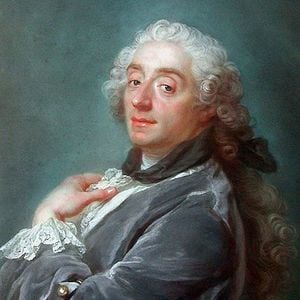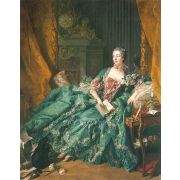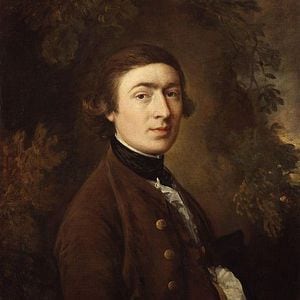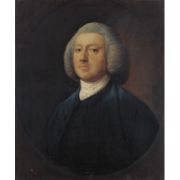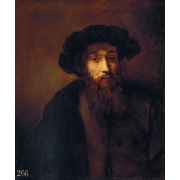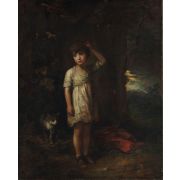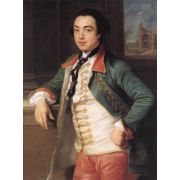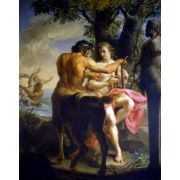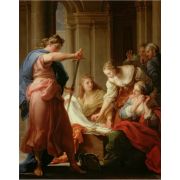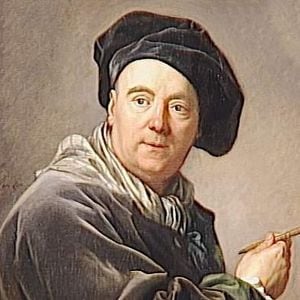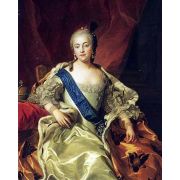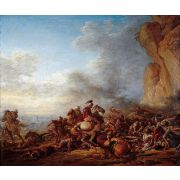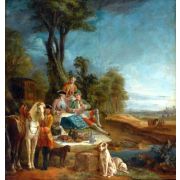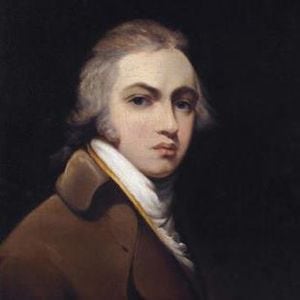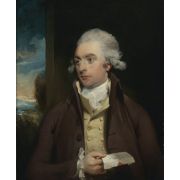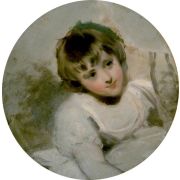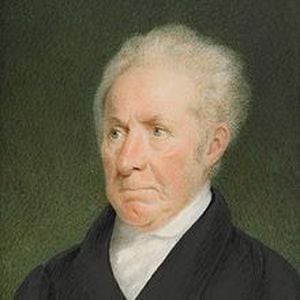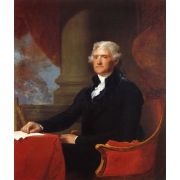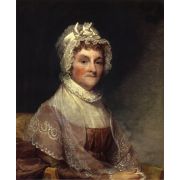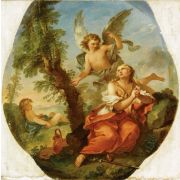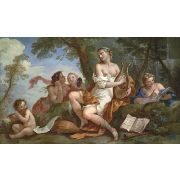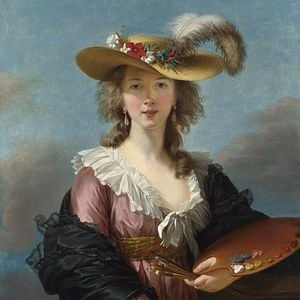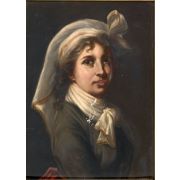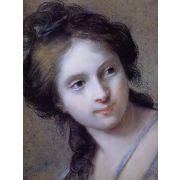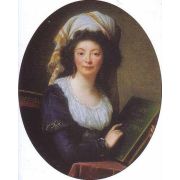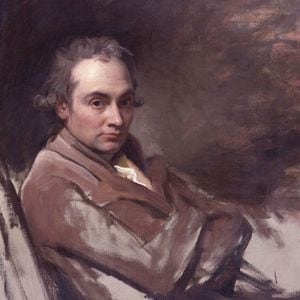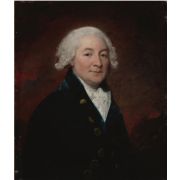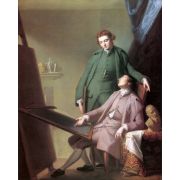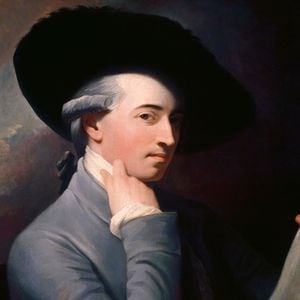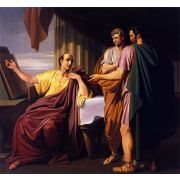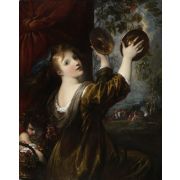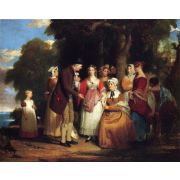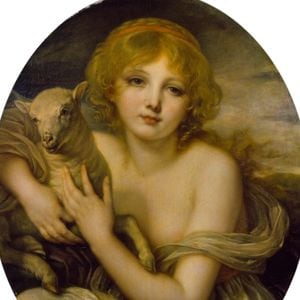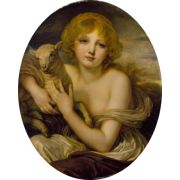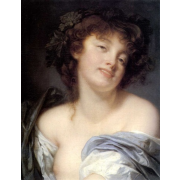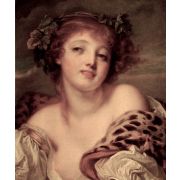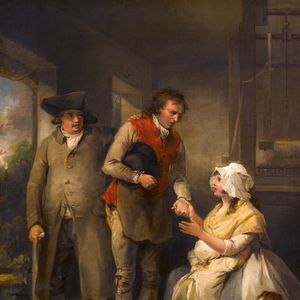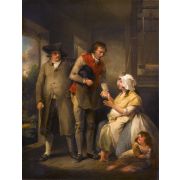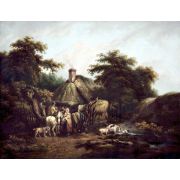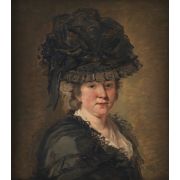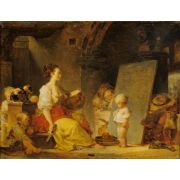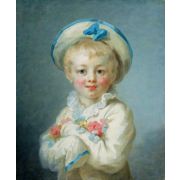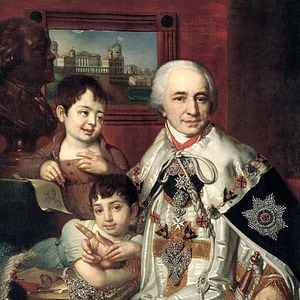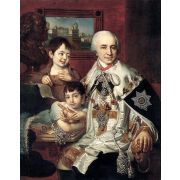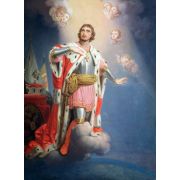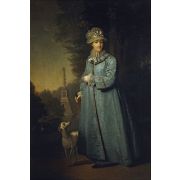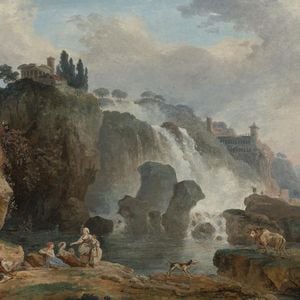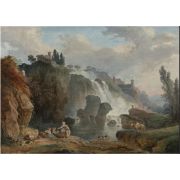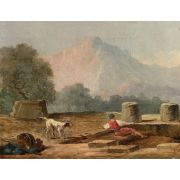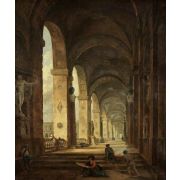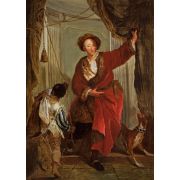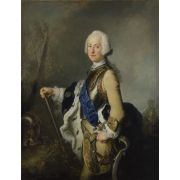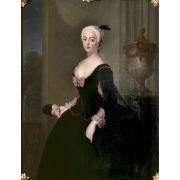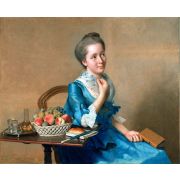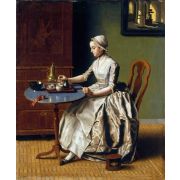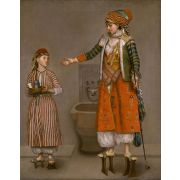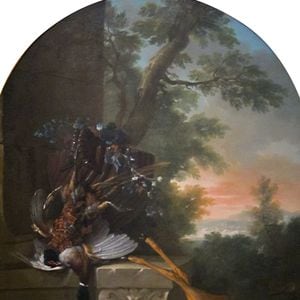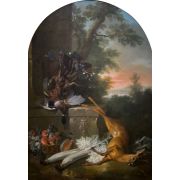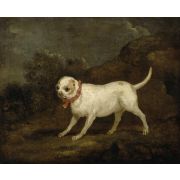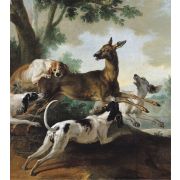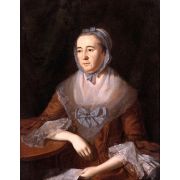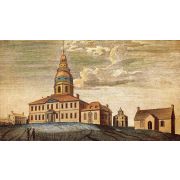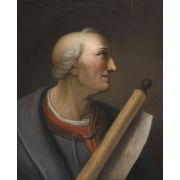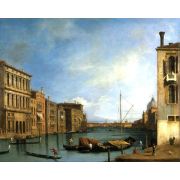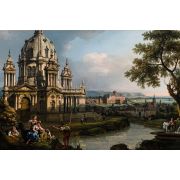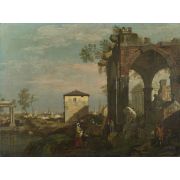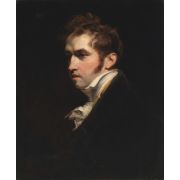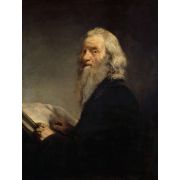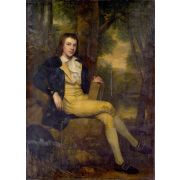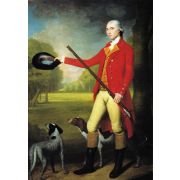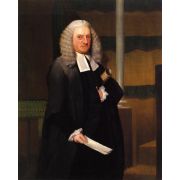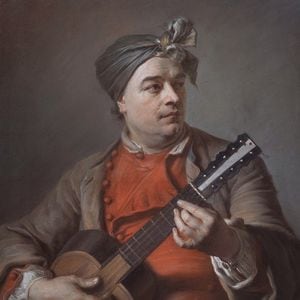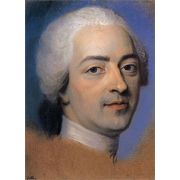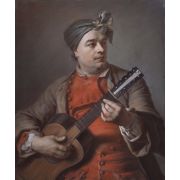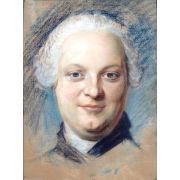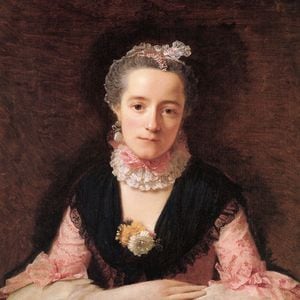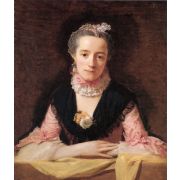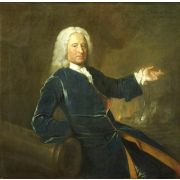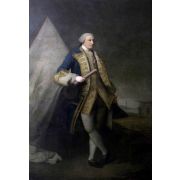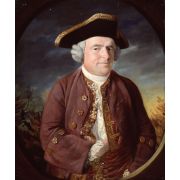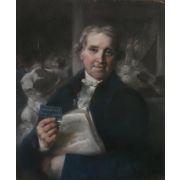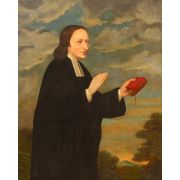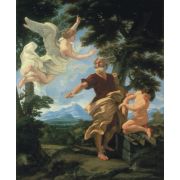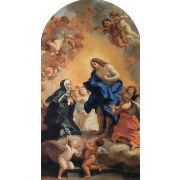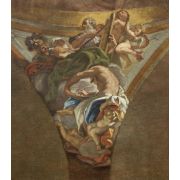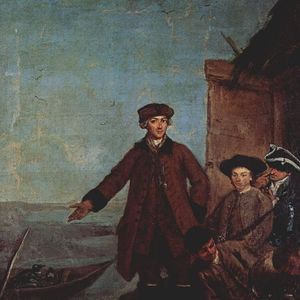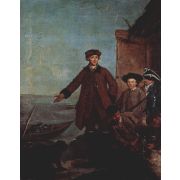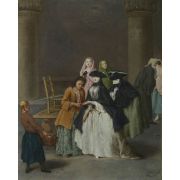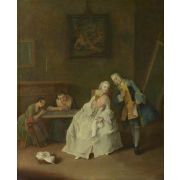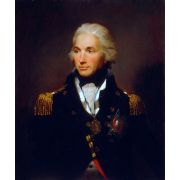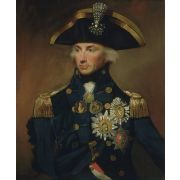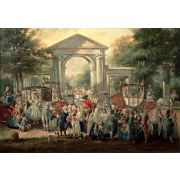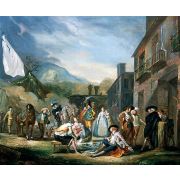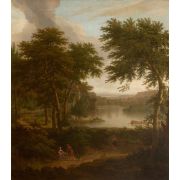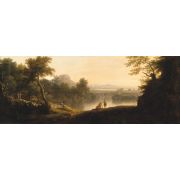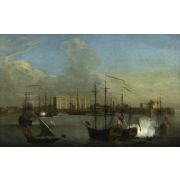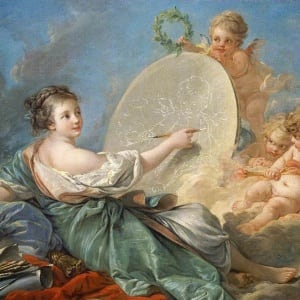
Rococo
Rococo
1 to 30 out of 35 artists
Thomas Gainsborough
1727 -1788, British / Romanticism and Rococo, 565 works
Pompeo Batoni
1708 -1787, Italian / Neoclassicism and Rococo, 418 works
Thomas Lawrence
1769 -1830, British / Rococo and Romanticism, 293 works
Gilbert Stuart
1755 -1828, American / Romanticism and Rococo, 251 works
Élisabeth Vigée-Lebrun
1755 -1842, French, Female Artist / Rococo, 247 works
Benjamin West
1738 -1820, American / Rococo and Neoclassicism, 244 works
Vladimir Borovikovsky
1757 -1825, Russian / Rococo and Neoclassicism, 176 works
1 to 30 out of 35 artists
Rococo appreciated lavish decoration and detailed artistry in art and home design. Rococo paintings celebrated extravagant ideals and aristocratic lifestyles and pleasures. The trend began in France in the early 1700s and fused decorative and fine arts into a visual vocabulary spread across 18th-century Europe.
The Venetian School's use of color and sensual topics impacted Rococo art. Giorgione and Titian impacted Rococo's whirling colors. Pastoral Concert (c. 1509), previously assigned to Giorgione but now regarded as one of Titian's early works, was first designated as a Fête champêtre by the Louvre. The Renaissance artwork of naked ladies and noble men performing music in a pastoral scene influenced Rococo's courting paintings or Fête Galante. Watteau popularized the phrase for historical images of happy times. His "receiving piece," Embarkation for Cythera (1717), inaugurated the Rococo style. The Academy called the piece Fête Galante, defining a type that would dominate Rococo art. Depictions of nobles who drank, ate, and indulged in sexual pleasures in Arcadian gardens and parks became fashionable. It attracted private sponsors and matched the Academy's requirements for historical painting, which included mythical topics.
Watteau began his career as a decorator at Claude Audran's workshop, where he met Claude Gillot, a commedia dell'arte decorator. Watteau's paintings generally depicted costumed characters against artificially lighted backdrops. Watteau imitated Peter Paul Rubens' Life of Marie de Medici (1622-25) while working with Luxembourg Palace Keeper Claude Audren. Ruben's series influenced Watteau's art, which combined allegorical and mythical characters with Queen and court scenes. Rubens invented Trois crayons, a method employing red, black, and white to generate color effects. Watteau perfected the technique so well that succeeding Rococo painters, notably François Boucher, borrowed it.
Boucher was the most famous Rococo artist from 1730 to 1760, influenced by Rubens and Watteau. The Toilet of Venus (1751) combines aristocratic elegance with sensual nudity. He also influenced decorative arts, theatre settings, and tapestry design. He was named First Painter to the King in 1765 but is most remembered for his long affiliation with Madame de Pompadour, King Louis XV's first lover and a prominent art collector.
Madame de Pompadour, born Jeanne-Antoinette Poisson, promoted the Rococo style and became Paris Europe's creative center. She patronized Jean-Marc Nattier, Jean Baptiste Pigalle, Jean-Baptiste Réveillon, and Jacques Guay, who furthered Rococo. She was the King's confidante and counselor until her death, aged 42 from TB. Her role defined royal patronage. Jean-Baptiste van Loo and François Lemoyne were Rococo painters. Lemoyne's Apotheosis of Hercules (1733-1736) was painted on the Salon of Hercules' ceiling at Versailles. Several artist families, such as the van Loos, kept their studios similar in style and subject matter.
Giambattista Tiepolo's paintings exemplify Italian Rococo. Tiepolo's masterworks were frescos and enormous altarpieces that used color with quadrature. His Apotheosis of the Spanish Monarchy (1762-1766) at Madrid's Royal Palace was a royal commission.
Italian Rococo was well famed for its "view-painters," especially Canaletto. He popularized a two-point linear perspective while painting Venice's canals and festivities. English nobility coveted his masterpieces like Venice: Santa Maria Della Salute (c. 1740). Young English nobles went on "Grand Tours" in the 1700s to learn about Western culture's classical foundations. Venice was a famous visit with its indulgent carnival atmosphere and breathtaking vistas. Most of Canaletto's paintings were sold to young English nobles, so he relocated to England in 1746 to be closer to his art market. He resided there for about a decade.
Rosalba Carriera was invited to the royal courts of France, Austria, and Poland for her pastel portraits and figurative compositions. By tying chalk into sticks, she produced a greater variety of strokes and colors by using pastels for painting. Her Portrait of Louis XV as Dauphin (1720-1721) emphasized aesthetic appeal and ornamental impact.
English Rococo, or "French style," was more restricted because of Protestantism. William Hogarth, Thomas Gainsborough, and Angelica Kauffman were among British painters who used them. Hogarth advocated for serpentine lines in The Analysis of Beauty (1753), describing them as organic and perfect. Gravelot, a former pupil of Boucher, inspired Gainsborough's portraiture toward fluidity of light and color. Angelica Kauffman, born in Switzerland, lived in Rome and London. Sir Joshua Reynolds appreciated her London portraits from 1766 until 1781. She was one of only two women elected to London's Royal Academy of Arts and helped advance Rococo and Neoclassicism.
Madame de Pompadour sent her nephew to study Italian art and archeology in 1750. Vandières was named director of the King's Buildings and started promoting Neoclassicism. As an art critic, he criticized Boucher's "petit style." Voltaire and Diderot criticized Rococo as shallow and decadent. Rococo fell out of popularity in 1780 due to these developments and French revolutionary enthusiasm.
Revolution Jacques-Louis David's Neoclassicism stressed courage and morality. David's art pupils sang "Vanloo, Pompadour, Rococo," mocking the style, one of its greatest painters and patron. By 1836, it meant "old-fashioned," and by 1841, "tastelessly florid or ornamental." 1902's Century Dictionary described rococo as "feebly pompous and unpleasant in art or literature."
Despite new trends in the city, the Rococo style remained fashionable in the French regions. In the 1820s, under King Louis Philippe's restored monarchy, the "Second Rococo" style extended to Britain and Bavaria. The Victorian Rococo Revival in Britain lasted until 1870 and influenced John Henry Belter's American Rococo Revival. Le gout Ritz was a 20th-century design for premium hotels. Rococo went out of favor in painting, save for Chardin's genre paintings, which Diderot appreciated and influenced Paul Cézanne, Édouard Manet, and Vincent van Gogh.
In L'Art du XVIIIe siècle, Edmund and Jules de Goncourt rediscovered Jean-Honoré Fragonard (1865). Yinka Shonibare, Kent Monkman, and Lisa Yuskavage are among the current artists he inspired. Watteau's commedia dell'arte topics impacted Pablo Picasso, Cézanne, Henri Matisse, Paul Verlaine, Guillaume Apollinaire, Arnold Schoenberg, and George Balanchine.
